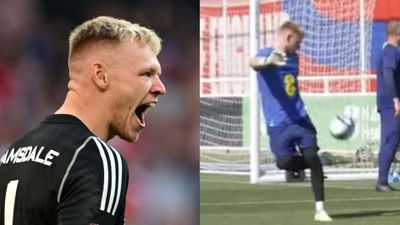Quick Betimate
Popular Leagues
Other Leagues
Mastering the Field: A Comprehensive Guide to Playing Football

Football, also known as soccer, is a globally loved sport that brings people together, promotes physical fitness, and fosters teamwork. Whether you're a beginner or an aspiring professional, this article will provide you with a comprehensive guide on how to play football. From the basic rules and techniques to advanced strategies and training tips, you'll find everything you need to enhance your skills on the field. So, grab your cleats and let's dive into the exciting world of football!
Understanding Basic Knowledge About Football
What is Football?
Football, also known as soccer in some parts of the world, is a popular sport played by millions of people across the globe. It is a game that brings together athleticism, strategy, teamwork, and skill. How is football played? Football is played between two teams, each consisting of 11 players, with the objective of scoring goals by maneuvering the ball into the opposing team's net. The game is played on a rectangular field, with specific rules and regulations governing gameplay.

Football is a popular sport played by millions of people across the globe
Football, also known as soccer in some parts of the world, is an ancient sport that holds immense global recognition. The apex of international football is marked by the grand event known as the FIFA World Cup. Other notable tournaments include the Euro Championships, Copa America, and the African Cup of Nations. The strongest domestic leagues can be found in England (English Premier League), Spain (La Liga), Italy (Serie A), and Germany (Bundesliga).
The Objective of the Game
Understanding the target of a match is important for playing football. The primary objective of a football match is to score goals. A goal is scored when a player successfully kicks or heads the ball into the opponent's net, which is defended by the opposing team's goalkeeper. Each goal scored adds one point to the scoring team's tally. The team with the most goals at the end of the designated playing time, usually 90 minutes, is declared the winner. In the event of a tie, extra time or a penalty shootout may be employed to determine the outcome.
Football Field and Equipment
Football Field
Every team is composed of 11 players, including one goalkeeper and ten outfield players. The dimensions of the playing field may differ between grounds, but they are approximately 120 yards long and 75 yards wide. Each pitch features a 6-yard box adjacent to the goal area, an 18-yard box surrounding the 6-yard box, and a center circle. It is essential that each half of the pitch mirrors the other half in terms of dimensions.
Equipment
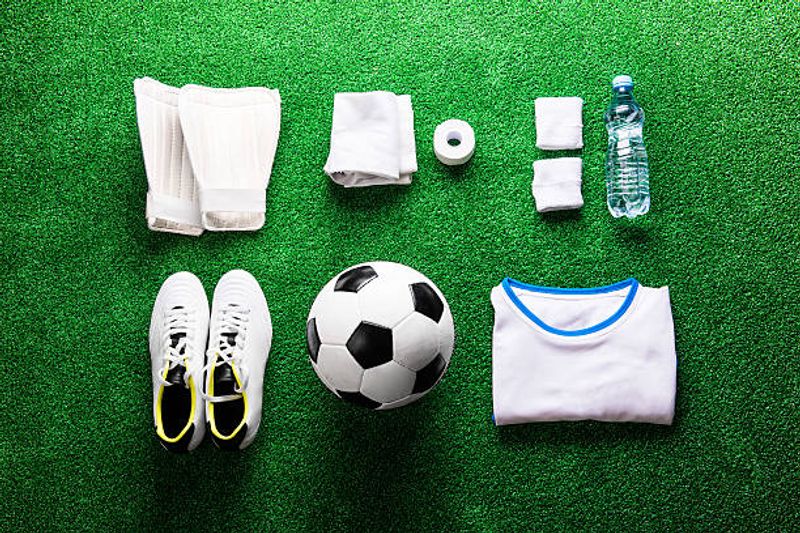
Equipment to play football
In essence, the necessary equipment for a soccer match includes a pitch and a ball. In addition, players are often seen wearing studded football boots, shin pads, and matching jerseys.
- Ball: The game revolves around a spherical ball specifically designed for football. It is usually made of leather or synthetic materials and must meet specific size and weight regulations.
- Football Boots: Players wear specialized football boots that provide traction and support on the grass surface. These boots have studs or cleats on the sole to prevent slipping and enable quick turns and movements.
- Shin Guards: Shin guards are worn to protect the lower legs from kicks and tackles. They are typically made of plastic or reinforced materials and are mandatory in official matches.
- Goalposts and Nets: At each end of the field, there are goalposts with nets. The goalposts are positioned at the center of each goal line and must meet certain dimensions.
- Referee Equipment: The referee, an integral part of the game, wears a distinctive uniform and is equipped with a whistle, cards (yellow and red), a watch to keep track of game time, and a notebook to record important information.
The positions and the roles of players
Goalkeeper
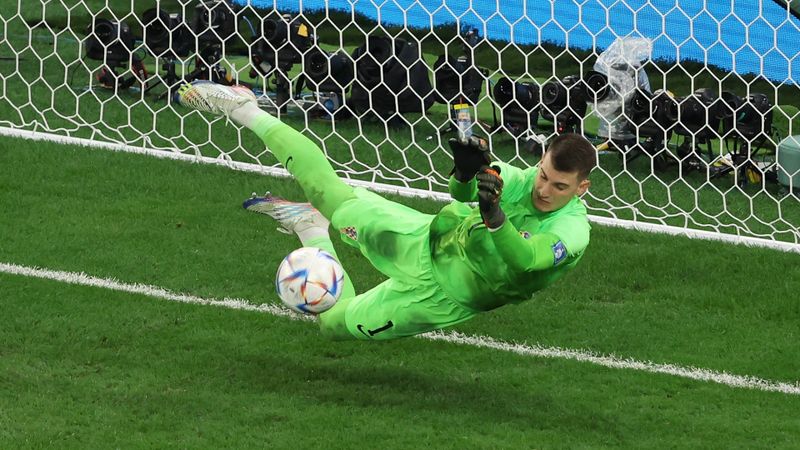
The goalkeeper's role is prevent opponent from scoring by blocking shots and organizing the defense
The goalkeeper plays a vital role in the team's defense. For a goalkeeper, how to football? Positioned in front of the goal, the goalkeeper's primary role is to prevent the opposing team from scoring by blocking shots and organizing the defense. The goalkeeper must possess excellent reflexes, agility, and positioning to make crucial saves. They often communicate with their defenders, providing instructions and organizing the defensive line. Additionally, goalkeepers are skilled in distributing the ball to initiate attacks.
Defenders
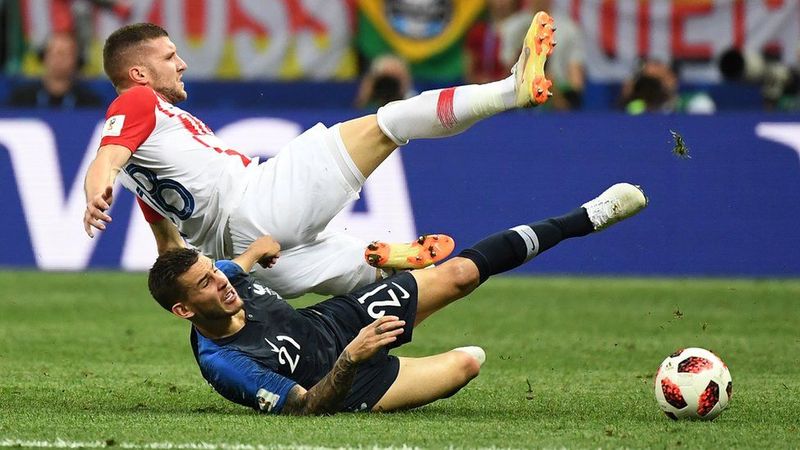
Defenders are responsible for protecting their team's goal
Defenders are responsible for protecting their team's goal in playing football process. They aim to stop the opposing team's attackers from advancing and scoring. Different types of defenders include center-backs, full-backs, and wing-backs.
Center-backs are typically positioned centrally and focus on marking the opposition's strikers. Full-backs or wing-backs play on the flanks, providing defensive cover and often joining the attack during offensive phases. Defenders need to be physically strong, have good tackling skills, and possess excellent positional awareness.
Midfielders
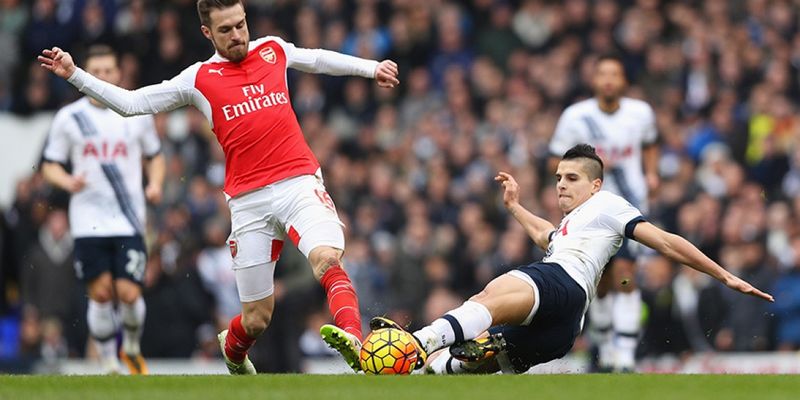
Midfielders are crucial in both defensive and offensive play
Midfielders operate in the central area of the field and are crucial in both defensive and offensive play.
Midfielders are the engine room of the team, linking defense and attack. They have multiple roles, including ball retention, distribution, and supporting both defensive and attacking transitions. Defensive midfielders focus on breaking up the opposition's play, intercepting passes, and initiating attacks. Creative midfielders are responsible for orchestrating the team's offensive moves, providing accurate passes, and creating scoring opportunities.
Forwards

Forwards focus on scoring goals
Also known as strikers or attackers, forwards focus on scoring goals. Forwards are the goal-scoring specialists of the team. They aim to outsmart the opposition's defense, create chances, and score goals. For strikers, how to play football well? Strikers often have a combination of speed, agility, and goal-scoring instincts. They must possess good ball control, shooting accuracy, and be adept at making runs to exploit gaps in the opposing defense.
The Referee's Role
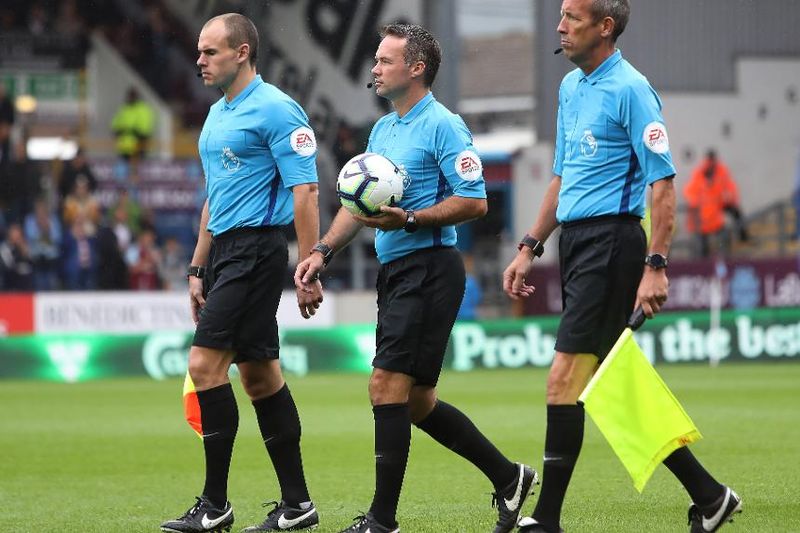
The referee plays a crucial role in maintaining fair play and enforcing the rules of the game
The referee plays a crucial role in maintaining fair play and enforcing the rules of the football playing match. Their responsibilities include:
- Game Management: The referee ensures the game proceeds smoothly, keeping track of time, and signaling the start, end, and any additional time periods.
- Enforcing Rules: The referee enforces the laws of the game, penalizing fouls, misconduct, and infringements. They have the authority to issue yellow or red cards, award free kicks, penalties, or throw-ins.
- Player Safety: The referee is responsible for ensuring the safety of the players. They intervene if they deem a challenge or action dangerous and have the power to stop the game if necessary.
- Decisions: The referee's decisions are final and binding. They have the authority to consult with assistant referees or video assistant referees (VAR) for assistance in making accurate decisions.
Rules & Regulations
Let's gain an understanding of the rules and regulations that govern the game of soccer. Here are some of the major rules:
Offside: This rule aims to prevent players from cherry-picking or lingering near the opponent's goal excessively. A player is considered offside if they are in the opponent's half and positioned behind the last defender.
Throw-in: When the ball completely crosses the boundaries of the field, a throw-in is awarded to the team that did not touch it last. The throw-in is taken from the spot where the ball went out of play. It involves the player using both hands to throw the ball from behind the head back into the field.
Yellow card: The referee issues a yellow card to a player as a warning when they commit a mistake. If a player receives two yellow cards, they are sent off and cannot continue playing. Reasons for receiving a yellow card include:
- Violating the rules of the game.
- Endangering the safety of opponents by recklessly hitting their heads.
- Intentionally shooting the ball at another player.
- The goalkeeper passing the ball with their hands to a teammate when it was kicked to them.
- Deliberately wasting time during the game.
Red card: A player is shown a red card if they receive a second yellow card and continue to make mistakes. Besides, a play can have to receive a direct red card if they have a serious mistakes in playign football process.
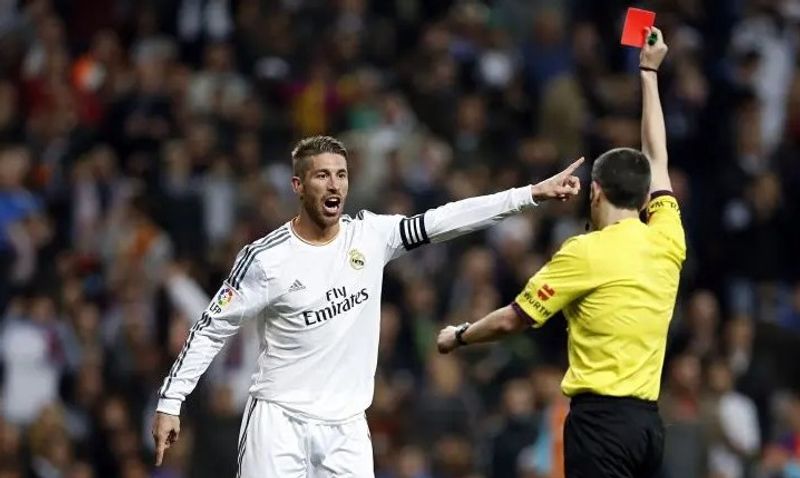
Red card in football rule
Reasons for receiving a red card include:
- Physically hurting another player by intentionally kicking them.
- Jumping on a player deliberately.
- Roughly hitting or charging at a player.
- Pushing or holding a player.
- Incorrectly handling the ball.
Free kick: These are awarded to a team as a penalty when the opposing team commits a foul. There are two types of free kicks:
- Direct free kick: The ball can be kicked directly into the goal without the need for it to be touched or passed by a teammate of the kicker.
- Indirect free kick: Another teammate of the player taking the kick must touch the ball before a goal can be scored.
Penalty kick: A penalty kick is given when a defending player commits a foul inside their team's penalty box. All players, except the goalkeeper, must be outside the penalty area. The ball is placed on the penalty spot and then kicked.

Penalty kick in football
Corner kick: A corner kick is awarded when the ball crosses the goal line without going into the goal and was last touched by a defending team member.
Goal kick: When the ball goes over the goal line without entering the goal and was last touched by an attacking team member, the defending team gains possession, and the goalkeeper takes a goal kick.
These rules ensure fair play and regulate various aspects of the game of soccer.
Praticing Key Skills in Football
The exhilaration of scoring a goal, the artistry of dribbling past opponents, and the precision of a perfectly executed pass are just a few of the elements that make this sport so captivating. So, how to play football well? To truly excel on the field, players must unlock the Key Skills in football.
Passing and Receiving
Passing and receiving are the building blocks of effective teamwork in playing football. Whether it's a short, crisp pass to retain possession or a long, lofted pass to break through the opposition's defense, honing these skills is crucial for any player.
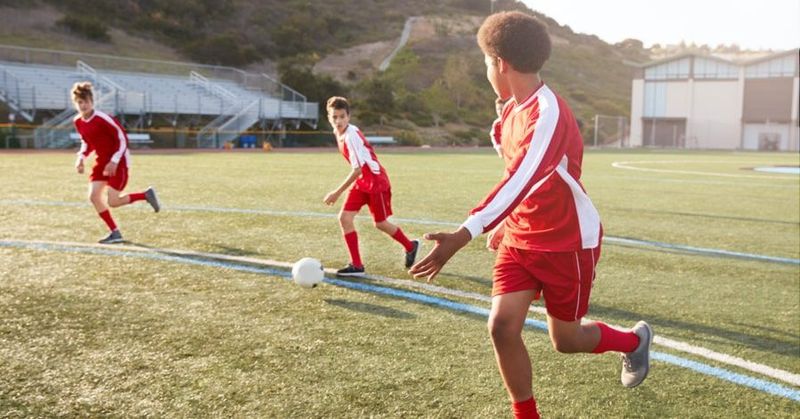
Passing and Receiving Skill
To become a proficient passer, focus on your technique. Stand with your feet shoulder-width apart, keep your eyes on the target, and use the inside of your foot to strike the ball. Mastering both short and long passes will allow you to dictate the pace and direction of the game.
Receiving a pass requires excellent awareness and control. Position yourself to create space, communicate with your teammates, and cushion the ball upon impact. With practice, you'll develop the ability to quickly assess the situation and make split-second decisions, which are invaluable on the field.
Some common passing mistakes
Common passing mistakes include using too much force, failing to judge the distance to your teammate accurately, and not using the appropriate surface of your foot. Practice will help you overcome these challenges and improve your passing accuracy in playign football process.
How to improve my receiving skills
To enhance your receiving skills, practice trapping the ball with different surfaces of your body, such as your chest, thigh, and feet. Additionally, work on your first touch to quickly bring the ball under control and set yourself up for the next move.
Should players always aim for a teammate when passing?
While it's ideal to pass to a teammate, there may be situations where passing to space or into open areas can be equally effective. Understanding the game situation and making the right decision in the heat of the moment is essential.
Dribbling and Ball Control
Dribbling is an art form in playing football, allowing players to maneuver past opponents with grace and precision. It requires a combination of technique, agility, and quick thinking. Mastering the art of dribbling can turn an average player into a true game-changer.
When dribbling, keep the ball close to your feet using short, controlled touches. Use both the inside and outside of your foot to manipulate the ball and maintain balance. Keep your head up, scan the field for opportunities, and use changes in pace and direction to deceive defenders.
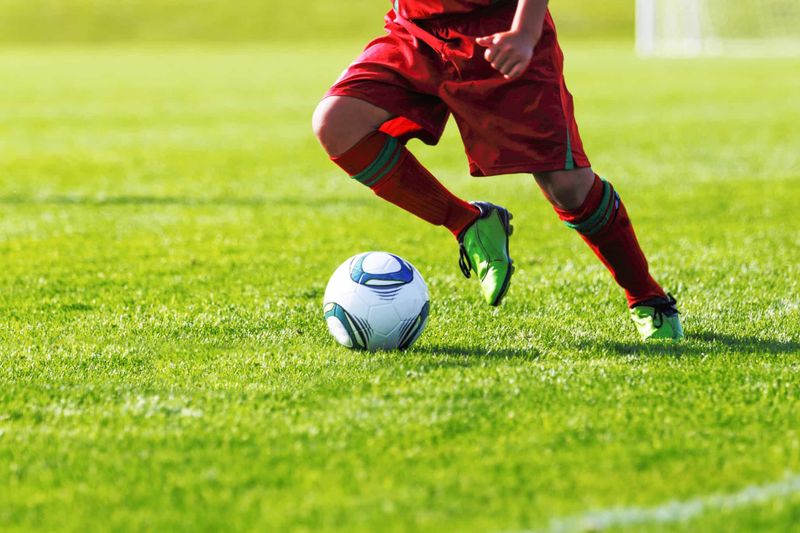
Dribbling and Ball Control Skill
Ball control is closely linked to dribbling and involves the ability to receive, retain, and manipulate the ball. Developing a soft touch and a strong understanding of how the ball moves will enable you to maintain possession, create scoring opportunities, and open up space for yourself and your teammates.
Some effective dribbling moves
Learning moves like the step-over, drag-back, and feint can help you deceive defenders and create space for yourself. Experiment with different moves and practice them until they become second nature.
How to improve my close ball control
Practicing drills that focus on close ball control, such as cone dribbling or dribbling through tight spaces, can significantly enhance your control over the ball in playing football process. Start slowly and gradually increase the difficulty to challenge yourself.
Importance of both feet while dribbling
Having the ability to use both feet effectively will make you a more versatile player. Work on your weak foot by practicing drills and exercises that specifically target its development.
Shooting and Scoring
The ultimate objective in football match is to put the ball in the back of the net, and mastering shooting and scoring techniques is key to achieving that goal. Developing accuracy, power, and composure in front of the goal requires practice and an understanding of the various shooting techniques.
To improve your shooting accuracy, focus on your body positioning and technique. Plant your non-shooting foot next to the ball, keep your eyes on the target, and strike the ball with the laces or instep of your foot. Follow through with your shooting leg, maintaining balance and control.

Shooting and Scoring Skill
Scoring goals is not only about shooting accurately but also about making intelligent runs and positioning yourself effectively. Anticipate where the ball will be played and make well-timed runs into goal-scoring positions. Be aware of your surroundings and exploit any weaknesses in the opposing defense.
How to increase shooting power
Building strength in your legs and core will help increase your shooting power. Incorporate exercises like squats, lunges, and plyometric jumps into your training routine. Additionally, practice striking the ball with the correct technique and maximizing your follow-through.
How to improving ability to score under pressure
Practicing shooting drills in game-like situations, with defenders applying pressure, will help you simulate real match scenarios. Focus on maintaining composure and making accurate shots even when faced with pressure.
What should players do if he/she keep missing the target when shooting?
Analyze your technique and body positioning when shooting. Make sure you're keeping your head down, aiming for the corners of the goal, and striking the ball cleanly. Adjusting these factors can significantly improve your accuracy.
Defensive Techniques
Defense is an integral part of football, and mastering defensive techniques is crucial for both individual players and teams in a football match. Effective defending requires a combination of tactical awareness, physicality, and discipline.
One of the fundamental defensive skills is marking. Stay close to your assigned opponent, anticipate their movements, and apply pressure without conceding unnecessary fouls. How to play footbal well with defensive techniques? Keep your body between the attacker and the goal, making it difficult for them to receive or pass the ball comfortably.

Defensive Techniques
Another key defensive technique is tackling. A well-timed tackle can break up an opponent's attack and regain possession for your team. When executing a tackle, aim to win the ball cleanly while avoiding contact with the opposing player. Timing, positioning, and a calm demeanor are essential for successful tackling.
How to improve marking skills
Study your opponents' playing style and habits to anticipate their movements. Practice shadow defending, where you simulate defending against an opponent without actually tackling. This will help you improve your positioning and timing.
Some common mistakes to avoid when tackling
Avoid tackling from behind, lunging into tackles recklessly, or using excessive force. Instead, focus on timing your tackle to win the ball cleanly and using your body to shield the opponent from the ball.
How to build a better team defender
Communication and coordination are vital for effective team defending. Stay connected with your teammates, communicate with them to ensure proper coverage, and maintain a disciplined defensive shape.
Tackling and Intercepting
In playing football, tackling and intercepting are essential skills for regaining possession and thwarting the opposition's attacks. These skills require a combination of timing, technique, and anticipation.
When tackling, timing is crucial. Mistimed tackles can result in fouls and penalties, while well-executed tackles can provide a significant advantage for your team. Aim to tackle when the opponent is in a vulnerable position or when they have taken a heavy touch, increasing your chances of winning the ball cleanly.
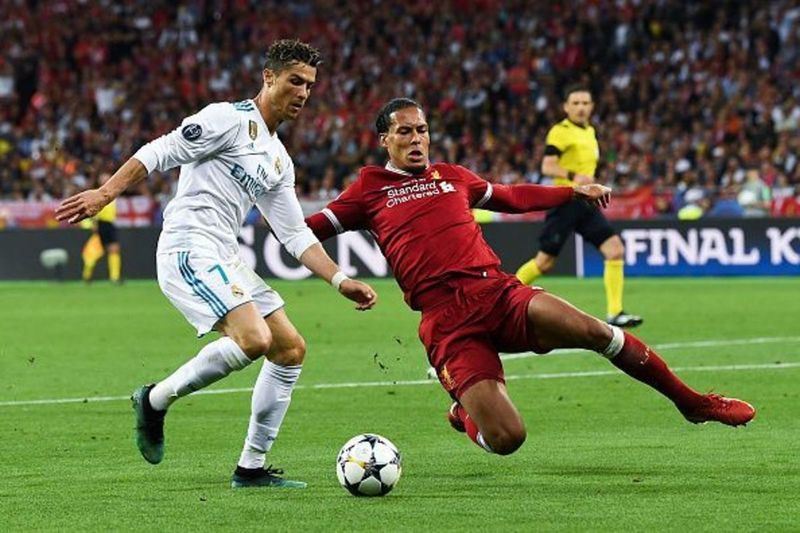
Tackling and Intercepting Skill
Intercepting passes is another valuable skill in football. By reading the game, anticipating the opponent's passes, and positioning yourself effectively, you can intercept the ball and disrupt the opposition's play. Quick reflexes, spatial awareness, and an understanding of passing patterns are vital for successful interceptions.
How to improve tackling technique
Practice tackling drills that focus on technique and timing. Start with slower-paced exercises to ensure correct form, and gradually increase the intensity. Remember to prioritize winning the ball cleanly rather than going for reckless challenges.
Some tips for intercepting passes
Develop your game reading abilities by studying your opponents' passing patterns and tendencies. Position yourself in passing lanes and be proactive in closing down space. Quick reactions and anticipation will help you intercept passes effectively.
How to defend against skillful players who are difficult to tackle
When facing skillful players, it's important to stay patient and maintain a balanced defensive stance. Focus on jockeying and containing the player rather than committing to a tackle too early. Use your body to block passing lanes and limit their options.
Goalkeeping Skills
The role of a goalkeeper is unique in football playing, requiring specialized skills to keep the opposition from scoring. Goalkeepers must possess excellent reflexes, agility, and a strong understanding of positioning.
One of the fundamental skills for goalkeepers is shot-stopping. This involves diving, blocking, and parrying shots to prevent the ball from entering the net. Proper positioning, combined with quick reactions, is essential for making crucial saves.
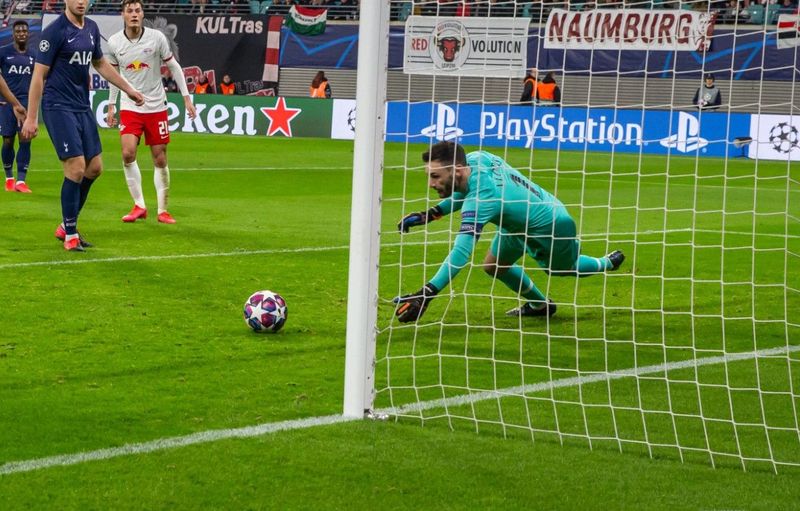
Goalkeeping Skills
Distribution is another crucial aspect of goalkeeping. A goalkeeper's ability to distribute the ball accurately and quickly can initiate counter-attacks and help maintain possession for their team. Mastering different throwing and kicking techniques will allow you to become an asset in both defensive and attacking situations.
How to improve shot-stopping abilities
Practice specific goalkeeping drills that focus on different types of shots, such as low drives, high shots, and close-range finishes. Develop your reflexes by incorporating reaction-based exercises into your training routine.
Some effective distribution techniques for goalkeepers
Experiment with various throwing techniques, such as the overarm throw, sidearm throw, or roll-out. For kicks, practice both goal kicks and long-range passes to specific targets. Work on accuracy and power to ensure effective distribution.
Importance of mental qualities for goalkeepers
Goalkeepers need to be mentally strong, resilient, and confident. The ability to quickly recover from mistakes, stay focused throughout the game, and make split-second decisions is crucial for success in this position.
Preparing physical fitness and essential conditions to play football
Besdies key skills, how to play football effectivelly? Playing football requires a combination of skill, strategy, and physical fitness. To excel on the field, football players must possess exceptional physical conditioning and endurance.
Building Stamina and Endurance
Building stamina and endurance is crucial for football players to withstand the physical demands of the game. It involves improving cardiovascular fitness, allowing players to sustain high-intensity efforts for extended periods in playing football matches.
Incorporate Aerobic Exercises
Aerobic exercises such as running, swimming, and cycling are effective in building stamina and endurance. These activities increase heart rate and lung capacity, improving oxygen delivery to the muscles. Regular aerobic training sessions, ideally three to four times per week, can significantly enhance a player's stamina.
Interval Training
Interval training is another valuable method to enhance endurance in football players. This technique involves alternating between high-intensity bursts of exercise and short recovery periods. For example, sprinting for 30 seconds and then jogging or walking for one minute. This approach simulates the intensity fluctuations experienced during a football match and improves the body's ability to recover quickly.
High-Intensity Interval Training (HIIT)
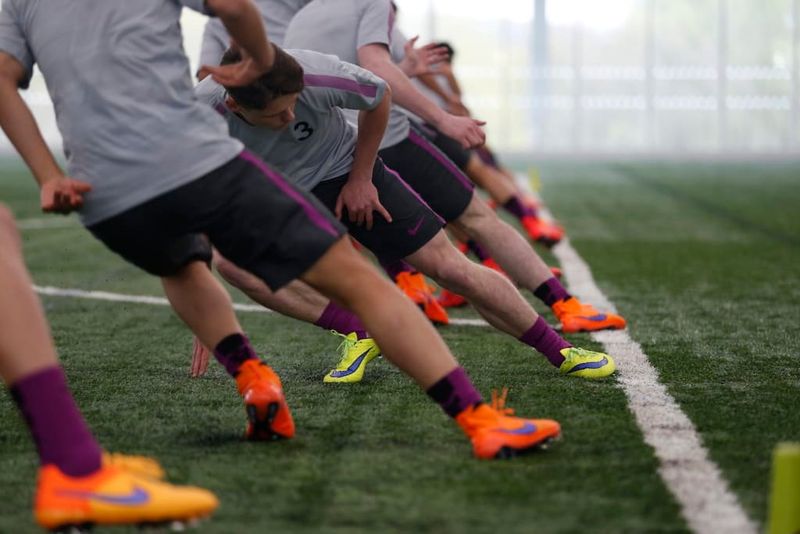
HIIT workouts helps players imporve fitness
HIIT workouts have gained popularity in recent years due to their effectiveness in improving endurance. These workouts involve short bursts of intense exercise followed by short recovery periods. For example, performing exercises like burpees, mountain climbers, or squat jumps at maximum effort for 20 seconds, followed by 10 seconds of rest. HIIT workouts can be incorporated into training routines to challenge the body's aerobic and anaerobic systems simultaneously.
Strength Training for Football
Strength training plays a crucial role in playing football, as it helps players develop power, improve their performance in tackles and jumps, and reduce the risk of injury. Here are some key aspects to consider when designing a strength training program for football players.
Compound Exercises
Compound exercises are fundamental in strength training as they engage multiple muscle groups simultaneously. Examples of compound exercises include squats, deadlifts, bench presses, and overhead presses. These exercises promote overall strength development and functional movement patterns that are relevant to football.
Focus on Lower Body Strength
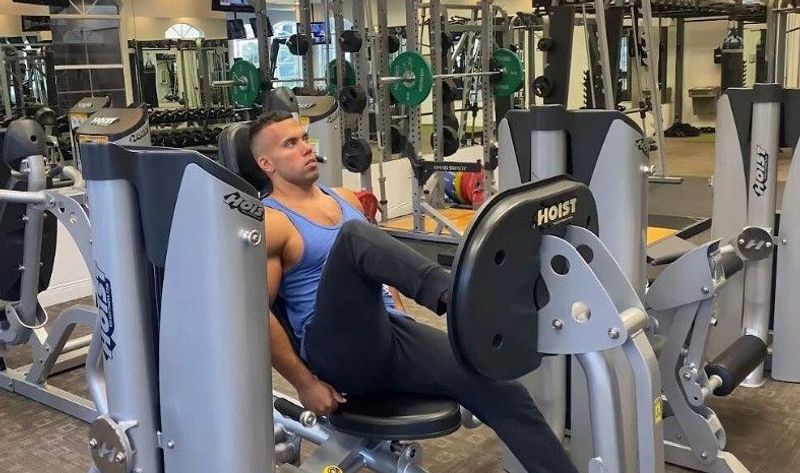
Focus on lower body strength is an essential method
Football heavily relies on lower body strength for explosive movements, agility, and stability. Therefore, exercises like squats, lunges, step-ups, and plyometric drills should be prioritized in strength training programs. These exercises help enhance leg strength, improve speed, and enable players to generate powerful movements on the field.
Core Stability
A strong and stable core is essential for football players to maintain balance, transfer power, and resist injury. Incorporating exercises like planks, Russian twists, and medicine ball throws can enhance core strength and stability, improving overall performance on the field.
Speed and Agility Exercises
Speed and agility are crucial attributes for success in football. Players need to be able to sprint, change direction quickly, and react swiftly to game situations. Here are some exercises to improve speed and agility.
Sprint Training
Sprint training is a vital component of speed development for football players. Short sprints over distances of 10 to 40 yards should be incorporated into training sessions to enhance acceleration and top-end speed. Additionally, performing hill sprints can provide an added challenge and improve leg power.
Ladder Drills
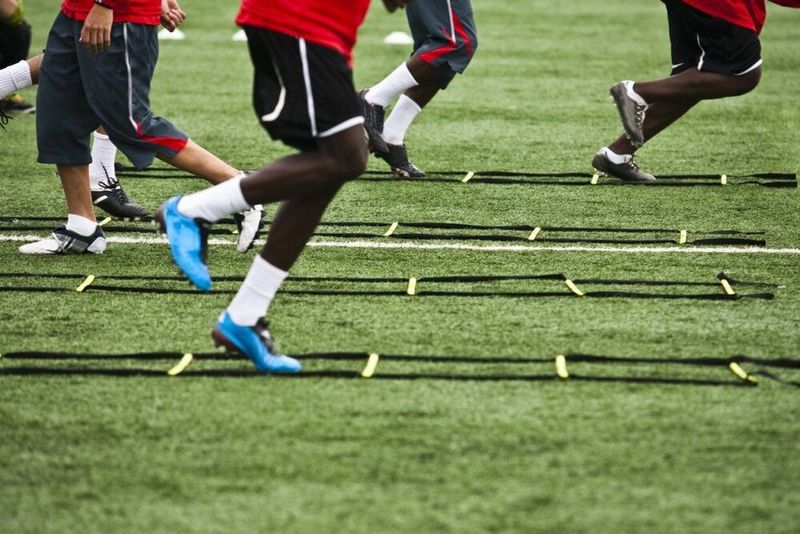
Ladder Drills is a training method in football
Ladder drills are excellent for improving footwork, agility, and coordination. These drills involve various movements, such as high knees, lateral movements, and quick feet. Incorporating ladder drills into training routines can enhance a player's ability to change direction rapidly and maintain balance during high-intensity movements.
Cone Drills
Cone drills are commonly used in football training to simulate game situations and improve agility. Setting up a series of cones in different formations and practicing movements like zig-zags, figure eights, and lateral shuffles can significantly enhance a player's ability to change direction quickly and evade opponents on the field.
Flexibility and Injury Prevention
Injury is an unexpected situation for any players. How to play football wiht limit injuries? Flexibility plays a vital role in injury prevention and overall physical performance. Football players need to have good range of motion to perform movements effectively and reduce the risk of muscle strains or tears. Here are some strategies to improve flexibility and prevent injuries.
Dynamic Warm-up
A dynamic warm-up routine before training or games is essential for preparing the body for physical exertion. Dynamic stretching involves active movements that gently take joints and muscles through their range of motion. This type of warm-up helps increase blood flow, improve flexibility, and reduce muscle stiffness before engaging in more intense activities.
Static Stretching

Static Stretching is a training method in football
While dynamic stretching is ideal before physical activity, static stretching is beneficial during cooldown periods. Static stretching involves holding a stretch for an extended period, targeting specific muscle groups. Regular static stretching after workouts can improve flexibility and maintain muscle length, reducing the risk of muscle imbalances and injuries.
Incorporate Yoga or Pilates
Yoga and Pilates are excellent practices for improving flexibility, balance, and core strength. These disciplines can enhance a player's overall body control, stability, and joint mobility. Incorporating yoga or Pilates sessions into a training program can help football players achieve and maintain optimal flexibility levels.
Proper Nutrition for Football Players
Proper nutrition is essential for football players to fuel their performance, support recovery, and maintain overall health. A well-balanced diet should include the following components.
Macronutrients
Football players require an adequate intake of carbohydrates, proteins, and fats to meet their energy needs. Carbohydrates provide the primary source of fuel for the body, while proteins support muscle repair and growth. Healthy fats are important for hormone production and nutrient absorption. Balancing these macronutrients is crucial for optimal performance and recovery.
Hydration
Staying properly hydrated is vital for football players to maintain performance levels and prevent dehydration. Adequate fluid intake before, during, and after training or games is essential. Water is the best choice for hydration, but sports drinks can be beneficial during prolonged intense exercise to replenish electrolytes lost through sweat.
Pre- and Post-Exercise Nutrition

Pre- and Post-Exercise Nutrition
Eating a balanced meal or snack before training or games provides the necessary fuel for the body. Incorporating complex carbohydrates, lean proteins, and healthy fats can ensure sustained energy levels and support muscle function. After exercise, consuming a combination of carbohydrates and proteins aids in muscle recovery and glycogen replenishment.
Mental Preparation and Focus
Football is not just a physically demanding sport but also a mentally challenging one. Mental preparation and focus are crucial for enhancing performance and maintaining composure on the field. Here are some strategies to improve mental preparation in football.
Visualization Techniques
Visualization involves mentally rehearsing specific scenarios, plays, or movements. By visualizing successful outcomes and effectively executing plays in the mind, football players can enhance their confidence and performance on the field. Regular visualization exercises can improve decision-making, reaction times, and overall game awareness.
Goal Setting
Setting clear and achievable goals helps football players stay motivated and focused. Goals can be both short-term and long-term, encompassing individual performance targets, team objectives, and personal development. Regularly reviewing and adjusting goals keeps players engaged and driven to improve their performance.
Mental Toughness Training
Football players need to develop mental toughness to overcome challenges, cope with pressure, and maintain focus during football matches. Techniques such as deep breathing, positive self-talk, and mindfulness meditation can help players stay calm, centered, and mentally resilient in high-pressure situations.
Developing Strategies and Tactics
Importance of an Effective Game Plan
Creating a game plan is like laying the foundation for a successful football team. It involves meticulous analysis of the strengths and weaknesses of both your team and your opponents. From that, players can understand how to football in the next match. A well-crafted game plan provides a roadmap for players to follow, maximizing their potential and exploiting the weaknesses of the opposing team.
To create an effective game plan, coaches and managers need to consider various factors, such as the team's style of play, player abilities, and the goals of the game. They also need to assess the opponents' strategies and tendencies to develop a plan that capitalizes on their vulnerabilities. By utilizing data-driven insights and employing innovative tactics, teams can gain a competitive edge and increase their chances of success.
Understanding Formations
Formations play a pivotal role in playing football, shaping the team's structure and determining the positioning and roles of players on the pitch. By understanding formations, coaches can effectively deploy their players, optimize team balance, and exploit the opposition's weaknesses.
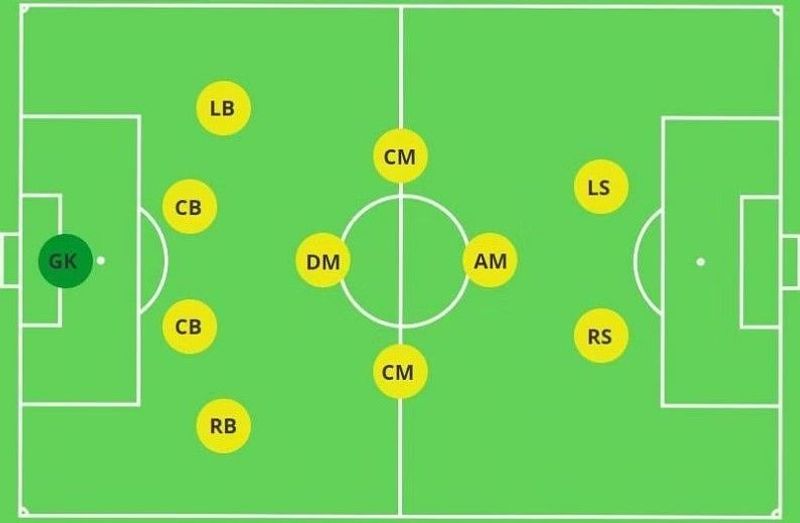
Understanding formations is important for developing strategies and tactics
In strategic perspective, How is football played? There are various formations commonly used in football, such as the 4-3-3, 4-2-3-1, and 3-5-2. Each formation has its strengths and weaknesses, and the choice depends on the team's style of play, the strengths of individual players, and the objectives of the game. For example, a team aiming to dominate possession might opt for a formation that emphasizes a strong midfield presence, while a team looking to counter-attack might prefer a more compact formation with quick wingers and a lone striker.
Attacking Strategies
Attacking strategies are designed to create scoring opportunities and break down the opposition's defense. They involve a combination of movement, passing, and intelligent positioning to exploit spaces and penetrate the defensive lines.
One popular attacking strategy is the "tiki-taka" style, characterized by quick short passes and constant player movement. This strategy aims to create overloads in certain areas of the pitch, disorient the defense, and open up passing lanes for incisive through balls or shots on goal.
Another attacking strategy is the "direct play" approach, where teams focus on quick, long passes to bypass the opposition's defense and catch them off guard. This strategy is often utilized by teams with tall and physically dominant players who can win aerial duels and create goal-scoring opportunities from crosses or long balls.
Defensive Strategies
Defensive strategies are crucial in playing football to prevent the opposition from scoring and maintain a solid defensive structure. These strategies involve organizing the defensive line, pressuring the opponents, and limiting their time and space on the ball.
One commonly used defensive strategy is "zonal marking." In this approach, defenders are assigned specific zones on the pitch and are responsible for marking any opposing players who enter their zones. This strategy allows defenders to maintain positional discipline, cover each other, and limit the attacking team's penetration.
Another defensive strategy is "man-to-man marking," where defenders are assigned specific opponents to mark throughout the game. This strategy requires individual defenders to closely track their assigned opponents, denying them space and making it difficult for them to receive the ball or create scoring opportunities.
Counter-Attacking Tactics
Counter-Attacking Tactics is also one of the key strategies for "How to play football effectively" question. Counter-attacking tactics are employed by teams that prefer to absorb pressure from the opposition and then quickly transition into a swift attacking movement. These tactics can catch the opposing team off guard and exploit the spaces left behind when they commit players forward.
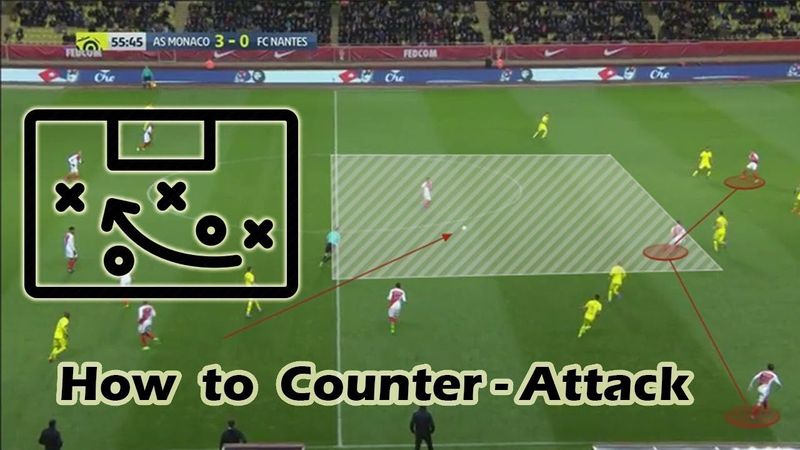
Counter-Attacking Tactics is an interesting strategy in football
One popular counter-attacking tactic is the "long ball counter." In this tactic, the team quickly launches long passes towards an advanced player who can hold up the ball and bring others into play. The team then looks to exploit the disorganized defense and launch fast, incisive attacks.
Another effective counter-attacking tactic is the "pressing counter." Here, the team presses the opposition intensely as soon as they lose possession, aiming to win the ball back quickly and launch a swift attack while the opposing team is still transitioning from offense to defense.
Set Pieces and Dead-Ball Situations
Set pieces and dead-ball situations provide excellent opportunities for teams to score goals or create goal-scoring chances in playing football. These situations include free kicks, corner kicks, and throw-ins near the opponent's penalty area.
Teams often develop specific routines and strategies for set pieces to create confusion in the opposition's defense and exploit any defensive vulnerabilities. These routines involve players making strategic runs, decoy movements, and well-executed passes to create space and scoring opportunities.
For example, a team might utilize a short corner routine to catch the opposition off guard, with one player quickly playing a pass to a teammate who is unmarked near the edge of the penalty area. This can create shooting or crossing opportunities, as well as open up passing lanes for players inside the box.
Avoding Common Mistakes
Football is a highly popular sport that requires skill, strategy, and teamwork. Whether you're a professional player or a weekend warrior, it's important to understand and avoid common mistakes that can hinder your performance in playing football.
Overcomplicating the Game
Overcomplicating the game of football can lead to confusion, indecisiveness, and missed opportunities. Many players, especially those who are new to the sport, tend to overthink their actions on the field. Instead of trusting their instincts and playing with natural ability, they become overwhelmed by complex tactics and strategies.
To avoid overcomplicating the game, it's essential to focus on the basics. Stick to the fundamentals of passing, dribbling, shooting, and positioning. Develop a clear understanding of your role within the team and execute your tasks with simplicity and precision. Remember, football is a game of simplicity, and often the simplest solutions are the most effective.
Lack of Communication
Communication is the lifeblood of any successful football team. Without proper communication, players can find themselves out of sync, resulting in missed passes, defensive errors, and a lack of coordination.
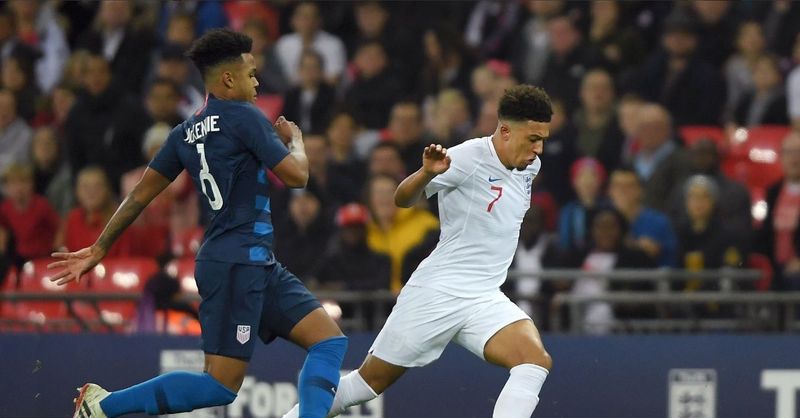
Lack of Communication is a common mistake in football
Effective communication involves both verbal and non-verbal cues. On the field, players should constantly communicate with their teammates, calling for passes, signaling for support, and providing feedback. This level of communication ensures that everyone is on the same page and can respond quickly to changing situations.
Furthermore, off-the-field communication is just as crucial. Regular team meetings, discussions, and strategy sessions help build camaraderie and a shared understanding of the game plan. By fostering a culture of open communication, teams can overcome obstacles and perform at their best.
Poor Decision-Making
Football is a fast-paced sport that requires split-second decision-making. Unfortunately, poor decision-making is a common mistake that can significantly impact a player's performance. Making the wrong choice at a critical moment can lead to missed scoring opportunities, defensive lapses, and even the loss of possession.
To improve decision-making skills, players should focus on situational awareness and anticipation. This involves reading the game, understanding the positioning of teammates and opponents, and evaluating the best course of action. Regular practice and game experience will enhance decision-making abilities, enabling players to make smart choices under pressure.
Neglecting Fitness and Conditioning
Football is a physically demanding sport that requires a high level of fitness and conditioning. Neglecting this aspect of the game is a grave mistake that can lead to fatigue, injuries, and decreased performance on the field.
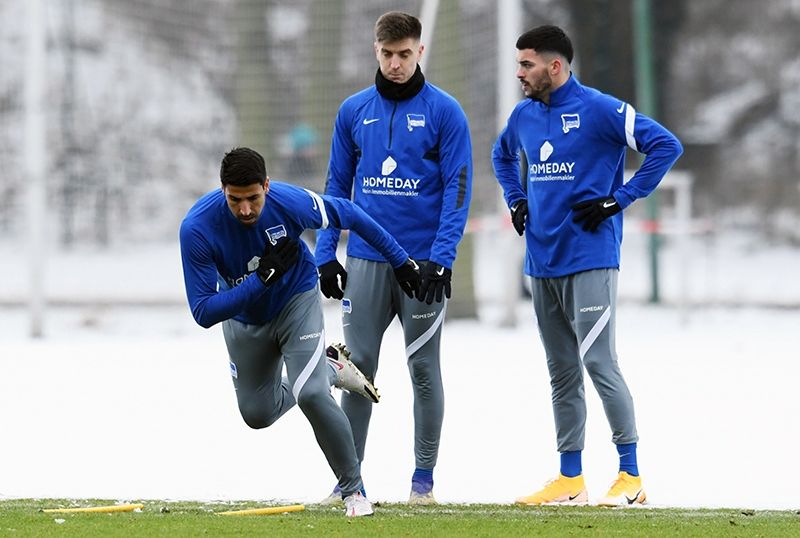
Neglecting fitness and conditioning is a common mistake in football
To avoid this common mistake, players should prioritize their fitness and conditioning. This includes following a structured training regimen that incorporates cardiovascular exercises, strength training, and agility drills. Additionally, maintaining a healthy diet and getting sufficient rest are essential for optimal performance.
By focusing on fitness and conditioning, players can increase their endurance, speed, and overall athleticism. This not only enhances their individual performance but also contributes to the team's success.
Inadequate Practice and Training
Practice makes perfect, and inadequate practice and training can severely hinder a player's development in football. Many players make the mistake of assuming that attending team practices alone is enough to improve their skills. However, consistent individual practice is equally important.
To avoid this mistake, players should dedicate regular time for individual training. This can involve practicing basic skills such as passing, shooting, and dribbling, as well as more advanced techniques specific to their position. Additionally, studying game footage, analyzing professional players, and seeking guidance from experienced coaches can further enhance a player's training regimen.
Remember, practice and training should be purposeful and focused. Setting specific goals and challenging oneself to improve in targeted areas will yield significant progress over time.
Not Seeking Feedback and Improvement
A common mistake in football is the failure to seek feedback and actively work on improvement. Many players are content with their current skill level and do not actively seek ways to enhance their performance.
To avoid this mistake, players should be open to feedback from coaches, teammates, and even opponents. Constructive criticism provides valuable insights into areas of weakness and offers opportunities for growth. Actively seeking feedback and implementing suggested improvements can elevate a player's game to new heights.
Furthermore, continuous learning is crucial in football. Stay up-to-date with the latest strategies, techniques, and trends in the sport. Attend workshops, seminars, and training camps to gain knowledge and interact with experts in the field. Embracing a growth mindset and being willing to adapt and improve are key to success in football.
FAQs - How to play football?
- A football match typically consists of two halves, each lasting 45 minutes, resulting in a total playing time of 90 minutes. However, additional time, known as stoppage or injury time, may be added to compensate for time lost due to substitutions, injuries, or other interruptions.
- In knockout competitions or when a definitive result is required, if the game ends in a draw after 90 minutes, extra time is played. Extra time consists of two halves of 15 minutes each. If the scores are still level after extra time, a penalty shootout may be employed to determine the winner.
- A yellow card is a cautionary card shown to a player by the referee to indicate a warning for a foul or unsporting behavior. If a player receives two yellow cards in a match, they are shown a red card and are sent off the field, resulting in their team playing with one fewer player.
- No, a player cannot score directly from a throw-in. A goal can only be scored if the ball is played by a teammate or an opponent before entering the net.
- Ideally, football players should engage in aerobic exercises three to four times per week. This frequency allows for optimal cardiovascular fitness and endurance development.
- Hydration is crucial for football players to maintain performance levels and prevent dehydration. Adequate fluid intake before, during, and after training or games is essential. Water is the best choice for hydration, but sports drinks can be beneficial during prolonged intense exercise.
- Communication is essential in football as it ensures coordination among teammates, facilitates quick decision-making, and helps avoid defensive errors. Effective communication involves both verbal and non-verbal cues.
- Attending team practices alone is not enough for skill improvement. Regular individual practice allows players to focus on specific areas, enhance their techniques, and analyze their performance for continuous growth.
Related Content
